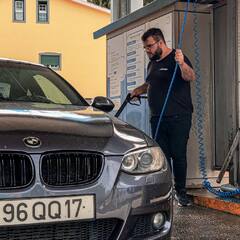ThrottleStop - What does this stand for and what does it do?
3 minutes ago, Pio Soesetio said:1. What does speedstep and speedshift do?
2. I heard that setting speedshift to 0 ensures max performance, is it true? and the lower the number, the higher the performance becasue of max power delivery to the core
3. If no. 2 is true, when i change the speedshift max and min to the lowest number which is 1 in the Turbo Power Limits tab in ThrottleStop, why is my core limited to the lowest clock speed (800 MHz)
4. What does BD Prochot do exactly?
5. What is cache ratio and should I change it (in the FIVR tab)
6. What is Analog I/O, System Agent? And should I undervolt that too?
7. I have a dedicated gpu (gtx 1050 Ti), will undervolting the intel gpu do anything to increase performance of the core? (because less power delivered to the gpu, does it mean more power will be used for the core?)
8. What is package power limit, and can i change that in a laptop since changing the package power short and package power long doesn't seem to change my tdp.
9. What is clamp in the TPL tab? should i check it or not
10. What is PP0, PP0 Current Limit, and PP0 current limit, does changing it make an impact? changing the power limit doesn't seem to change my tdp
11. What is intel power balance (TPL tab)
12. What is the tdp level control (TPL tab), i change mine to 0, heard that it will give max performance but my tdp doesn't change at all.
13. What is BCLK, C3, and DTS
1. Speedstep and speedshift both allow the clock speed and voltage of the CPU to change according to load, but through different means. Speedstep is carried out by the OS, Speedshift is carried out by the CPU itself.
2. Speedshift to 0 disables it and locks the core clock to its base clock. Turbo clock still only kicks in when appropriate but not all the time, so while the claim is true in theory (eliminates time for OS to ramp up clock speed), you can't tell difference in reality
3. Try larger numbers
4. BD Prochot stops the CPU from underclocking when it gets near the thermal shutdown temperature, and will shut down right away without notice when it reaches it's thermal shutdown point.
5. CPU cache ratio decreases cache latency, a bit like memory overclocking. Effect is tiny, so leave it as is.
6. Analog I/O are things like onboard sensors (Vccio refers to the voltage of this in desktops). System Agent are stuff like the memory controller and PCIe bus controller (as Vccsa in desktops). Both consume little power so there's no point in undervolting them and cause problems like crashing or sensor reporting false data.
7. Hardly any. With a dedicated card, the integrated GPU only does very light jobs like powering the desktop screen or decoding youtube videos, so there's little power budget spent on it. In games when you want more CPU performance, the integrated GPU isnt used at all so power draw is nearly nothing. Just leave it as is.
8. Package power limit = Limit of CPU (including integrated GPU) power draw. If your CPU is throttled by power, raising this will allow it to run at higher frequencies for longer periods of time. There are many more causes of CPU not going full bore though.
9. idk
10. PP0 refers to the power limit of the CPU cores, and only the CPU cores. It does not include other things in the CPU such as cache, memory controller, integrated graphics and so on. PP1 btw is the power limit of the iGPU.
11. How it spreads power to the CPU and iGPU. Not useful at all when you have a dedicated card.
12. low power CPUs can have multiple TDP settings, say the 8250u has both 10w and 25w TDP settings and 8750h has 35w and 45w settings. Either having it at 0 means it's at 45w (default TDP), or your laptop doesnt fully work with Throttlestop.
13. BCLK is the base clock. BCLK multiplied by the clock multiplier gives you the final clock speed in MHz. Laptops often do not let you tune it (that is, increasing in Throttlestop does nothing).
C3 is a part of c-states, your CPU activates different stages of C-states to lower the clock speed and voltage at idle to save power.
DTS is just degrees from thermal limit. In other words, thermal throttling kicks in when DTS reaches 0. If your CPU's thermal limit is 95C, then 25 DTS means 95-25=70 degrees celcius.



.thumb.gif.ad16b18341f801f5f81ab6752edec500.gif)












Create an account or sign in to comment
You need to be a member in order to leave a comment
Create an account
Sign up for a new account in our community. It's easy!
Register a new accountSign in
Already have an account? Sign in here.
Sign In Now